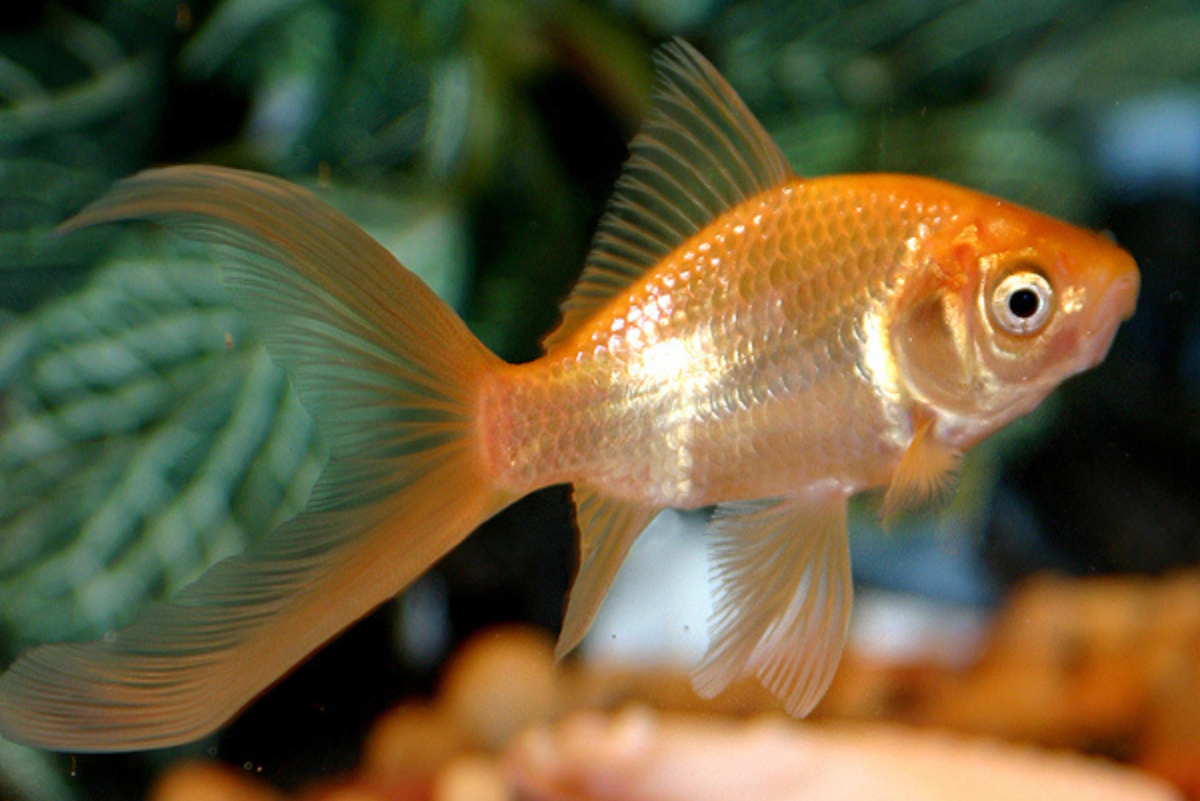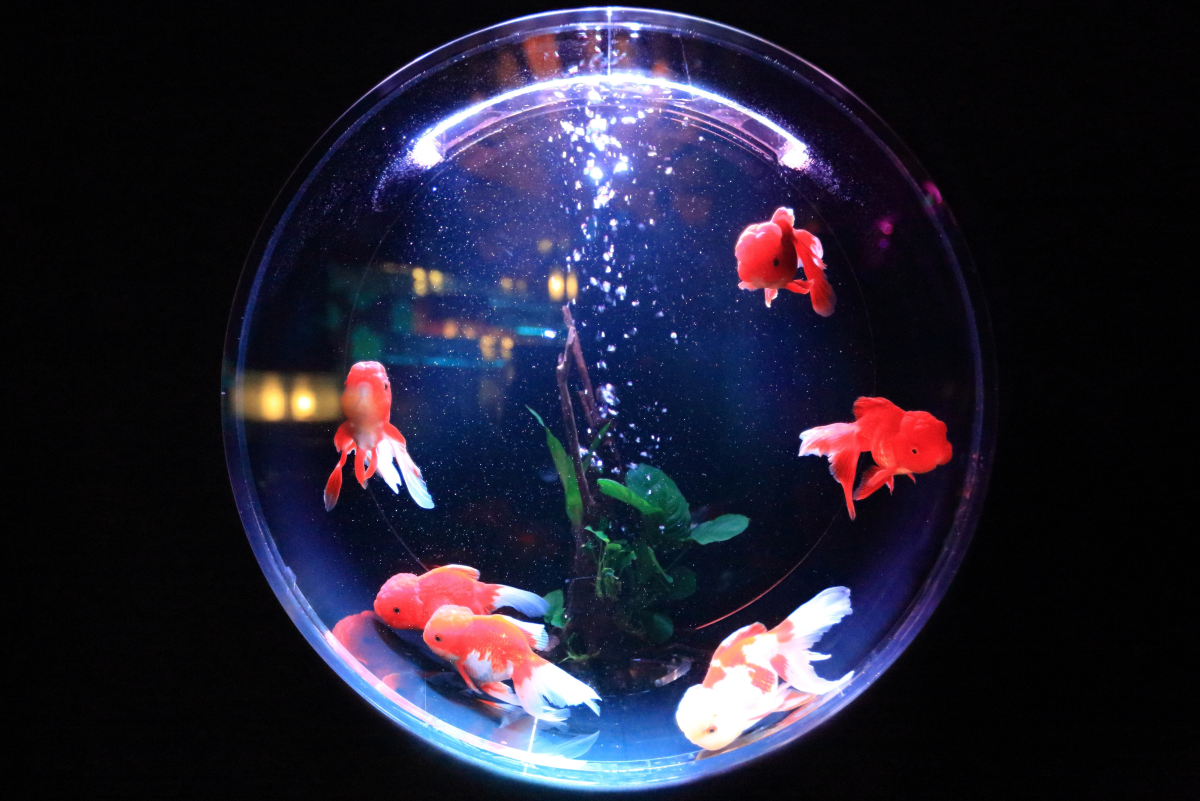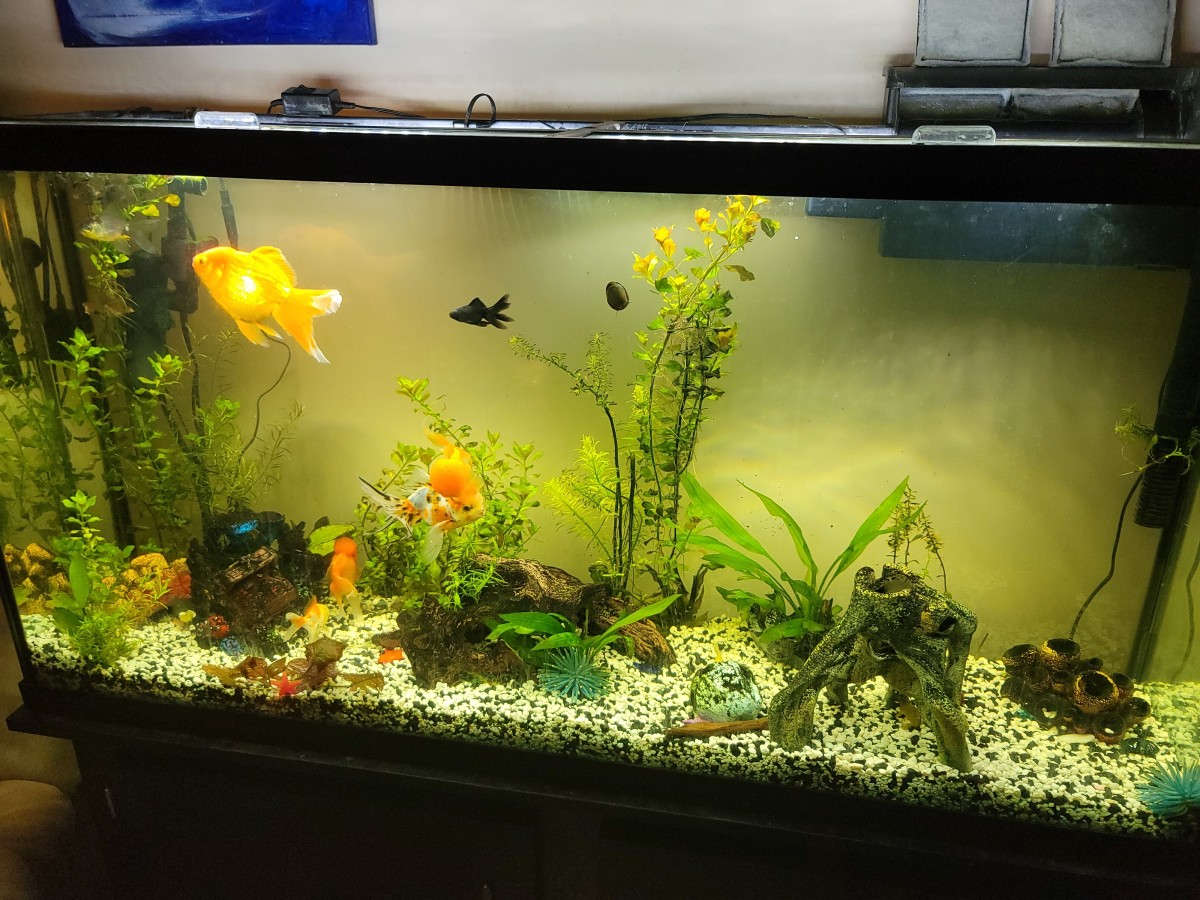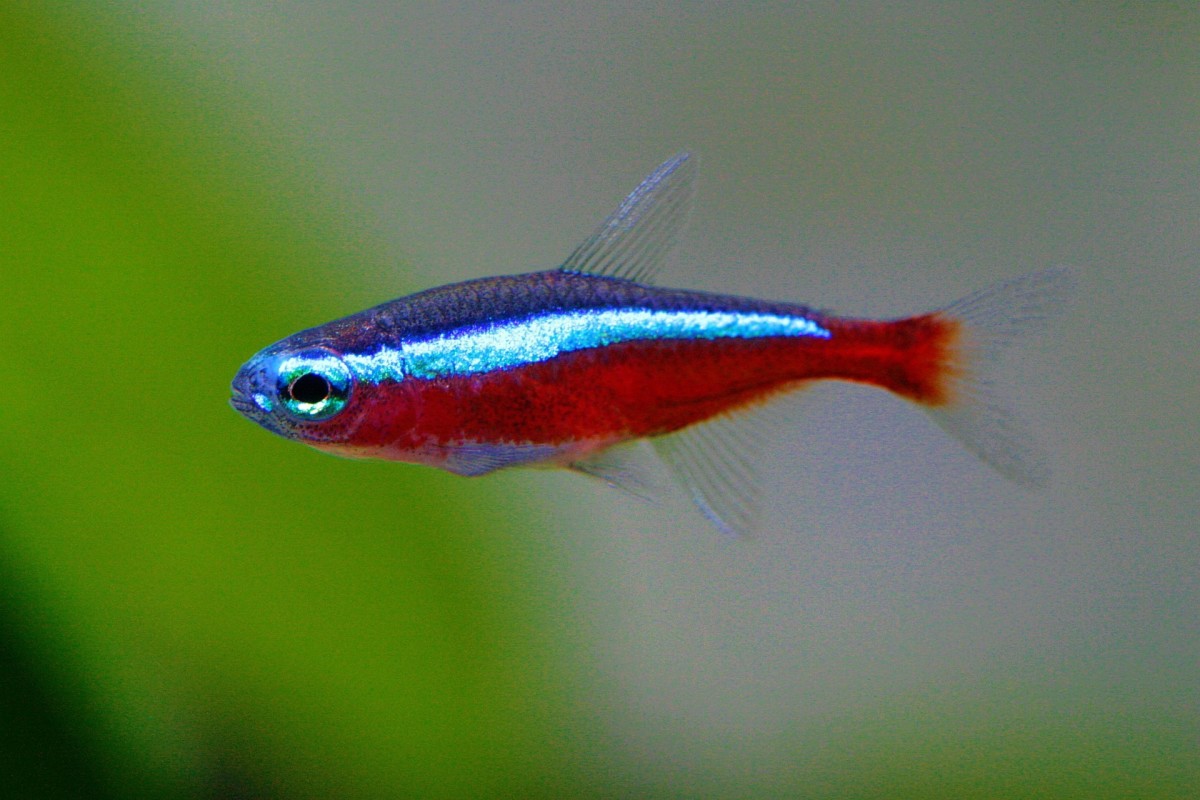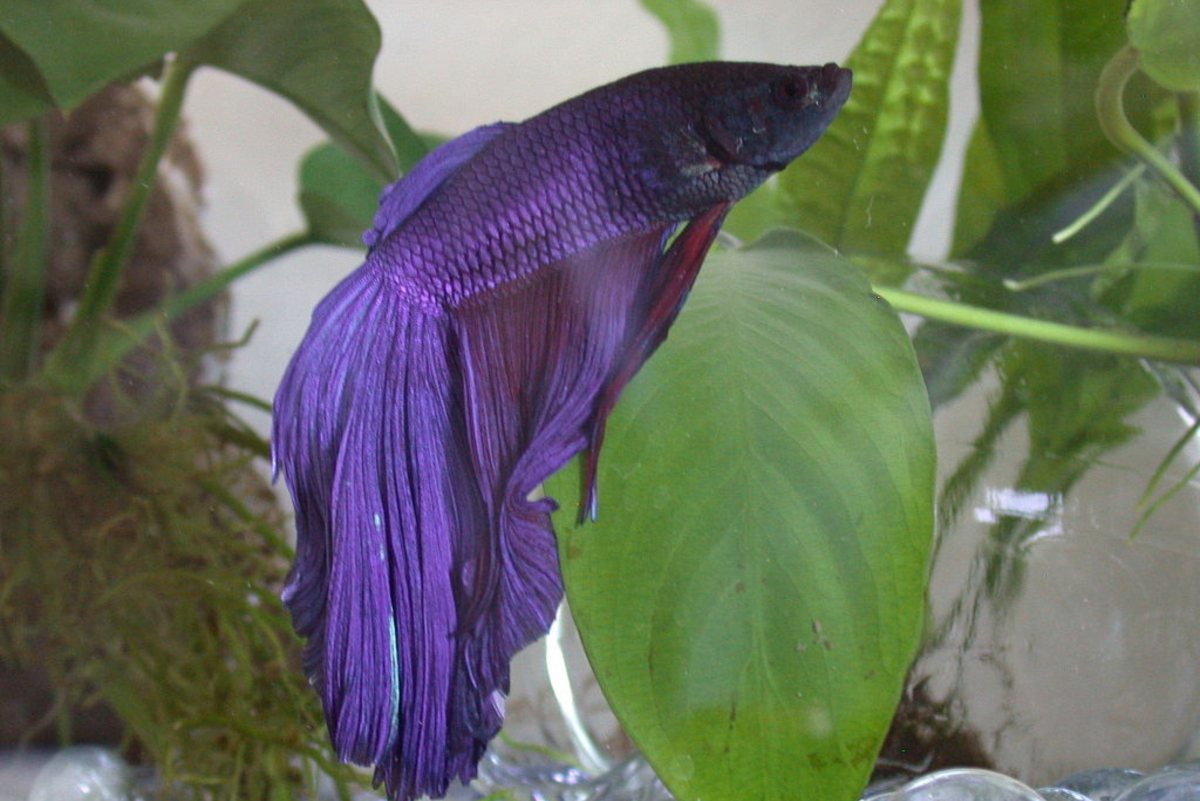Caring for Goldfish
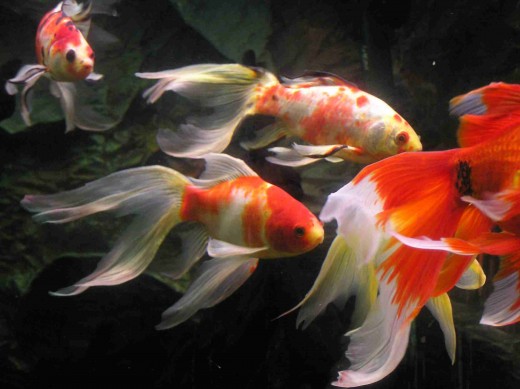
Goldfish Care Sheet and Facts
Common goldfish are orange to yellow-orange, about 2–4 inches long. They play well with other cold water community fish. You can keep a single goldfish or a school. To keep goldfish happy, make sure that the tank is large enough to accommodate all of your fish and that they have plenty of room to swim freely. They are particularly fussy about clean water.
Goldfish Quick Facts
- Common Name: Goldfish
- Scientific Name: Carassius auratus auratus
- Family: Cyprinidae
- Origin: China
- Size: typically up to 4 inches, though they can grow much larger
- Life Span: the record is 43 years, but 10–15 years is more common
- Tank Level: all areas of the tank
- Minimum Tank Size: 10 gallons
- pH Level: 6–8
- Hardness: general 4dH–20dH and carbonate 70mg/L – 400mg/L
- Temperature: 68–72 is optimal
- Lighting: Fluorescent is preferred, 2–2.5 watts per gallon
Goldfish Diet and Feeding
Keep a variety of flakes, pellets, frozen and freeze-dried foods on hand and alternate food in their diet. Feed your goldfish daily. Feed only an amount of food that they can eat in about 3–5 minutes. Be careful not to overfeed. Thaw frozen foods to room temperature before feeding.
Goldfish Habitat
Once you’ve set up the proper environment, maintain a consistent water quality, temperature, oxygenation and pH level. Goldfish respond well to stability. Check water temperature and equipment daily. Goldfish excrete a lot of toxins, so keeping the tank clean will help to keep your fish healthy. Test water quality once a week or more. Change 10–25 percent of the volume of water at least every two weeks or as needed. Gradually add new fish to the tank, not all at once, and quarantine new fish for a few weeks before adding to the main tank. If you notice your goldfish gasping, increase oxygenation.
Goldfish Health Issues
Goldfish are susceptible to fungus and ich. If you notice white, cottony patches on their body or fins, suspect fungus. Check and adjust water quality, if necessary, and contact your vet.
White patches accompanied by the goldfish rubbing against hard objects and swimming erratically can indicate ich. Move the goldfish to a quarantine tank and use a commercial ich medication for two weeks. If you see no improvement, contact your vet.
If you notice a loss of appetite, labored breathing, spots or fungus, test the water and make any necessary adjustments, and then call your vet.
Special Precautions
Always wash your hands before and after working with your fish or your tank to minimize the spread of infection and disease.
Due to their easy maintenance needs, goldfish are some of the most popular aquatic pets around! With as little as a bowl and some fish food flakes, you can enhance any area of your home with the brilliant color and enchanting presence of a goldfish.
Caring for Goldfish
While we tend to think of goldfish as being somewhat small and having their stereotypical metallic orange color, there are over one hundred different types of goldfish! The varieties include: Common, Comet, Celestial, Nymph, Fantail, Veiltail, Black Moor, Shubunkin, Ryukin, Bubble-Eye, Oranda, Lionhead, Ranchu, and Pearlscale. These varieties can range in color from orange, red, and yellow, to brown and black, and even blue and violet!
Goldfish coloration can be solid, spotted, or have patches. Several of the goldfish varieties are distinguished by unique body shapes, head shapes, or tail styles; even more unusual varieties are occurring as different varieties are bred together.
Setting up a goldfish tank can be a relatively simple process; however, installing a more advanced system will definitely improve the health and increase the lifespan of your fish! Although we tend to think of the single goldfish in a bowl, goldfish benefit from large tanks with proper filtration and aeration. If you find a fish that you truly love, don’t risk its health with an inferior setup!
One fish should have at least a 10 gallon goldfish aquarium with an air pump, heater, thermometer, and a filtration system. Don’t forget to acquire a lid for your tank—goldfish like to jump! Whatever tank and equipment you eventually acquire, your goldfish will be happiest and healthiest if you setup your tank and allow it to run for several weeks before you add fish.
Feeding your goldfish will become one of your favorite routines—it is simple and enjoyable! All you need is a good quality flake food that is specially designed for goldfish. If you like, from time to time you can supplement flake food with live food, such as daphnia. Whatever food you use, be sure not to add too much at a time. Excess food in the water is one of the surest ways to increase harmful bacteria in the fish’s environment.
The best way to care for your goldfish is through proper feeding, attention to the fish’s health, and—most importantly—regular tank cleanings. It’s best to remove and replace 10-15% of the water in your fish tank on a weekly basis. These weekly cleanings will ensure that waste and debris are removed and that your goldfish receives fresh water while still maintaining the balance of healthy bacteria in the tank. Simply put, with proper tank hygiene, your fish may never have a sick day in its life!
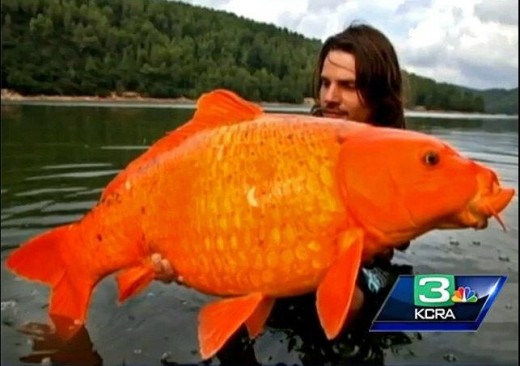
Goldfish
Should your goldfish become ill, there could be one of several common diseases at fault. The most prevalent goldfish diseases are either bacterial or fungal; Cloudy Eye, Dropsy, White Spot, Fin Rot, and Velvet are all examples of bacterial or fungal illnesses, and they can all usually be prevented with proper tank cleanings. There are many anti-bacterial and anti-fungal treatments available in pet stores; with a little medicine and diligent water changes, your fish can be back on the road to health.
Although your goldfish is beautiful on its own, you may choose to add interest and variety to your tank by adding some of these popular tank mates: loaches, plecos, minnows, zebra danios, rosy barbs, or an apple snail. These possible tank mates are all freshwater, cold water creatures. However, there’s no guarantee that your goldfish won’t choose to snack on these friends. Adding other fish to your goldfish tank will also necessitate more frequent tank cleanings, since goldfish produce waste in amounts than can easily harm other fish.
Breeding goldfish is a rewarding hobby. Although it can be difficult to determine the gender of your goldfish, increasing water changes and enhancing their diet can encourage them to spawn—giving you the added enjoyment of seeing the lifecycle of these delightful pets first-hand!
The goldfish that you purchase will depend largely on your personal preference. If there is a particular variety or coloration of goldfish that you truly love, then it’s worth the time and money that you’ll spend locating a fish that you’ll really enjoy. Regardless of the type of goldfish that you seek, when buying goldfish, avoid fish that are small for their size, have limp, weak fins, are discolored, have cloudy eyes, have dull or patchy scales, appear to have difficulty swimming or remaining upright, or goldfish that are in a tank with a sick fish.
If none of these warning signs are present and you’ve found a goldfish that you adore, then you’re on your way to years of enjoyment with your newfound friend!

